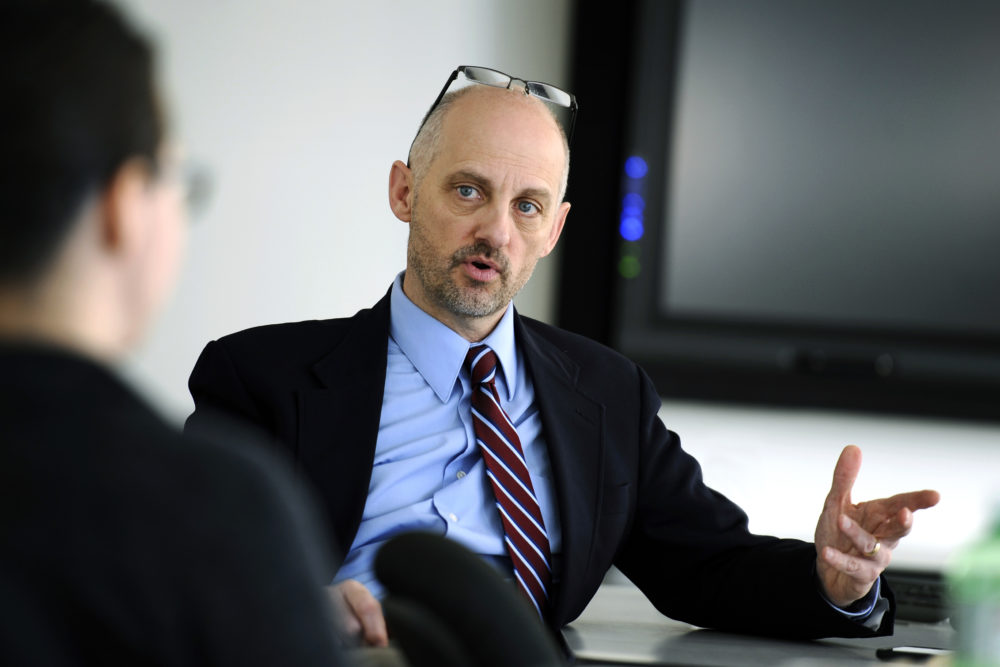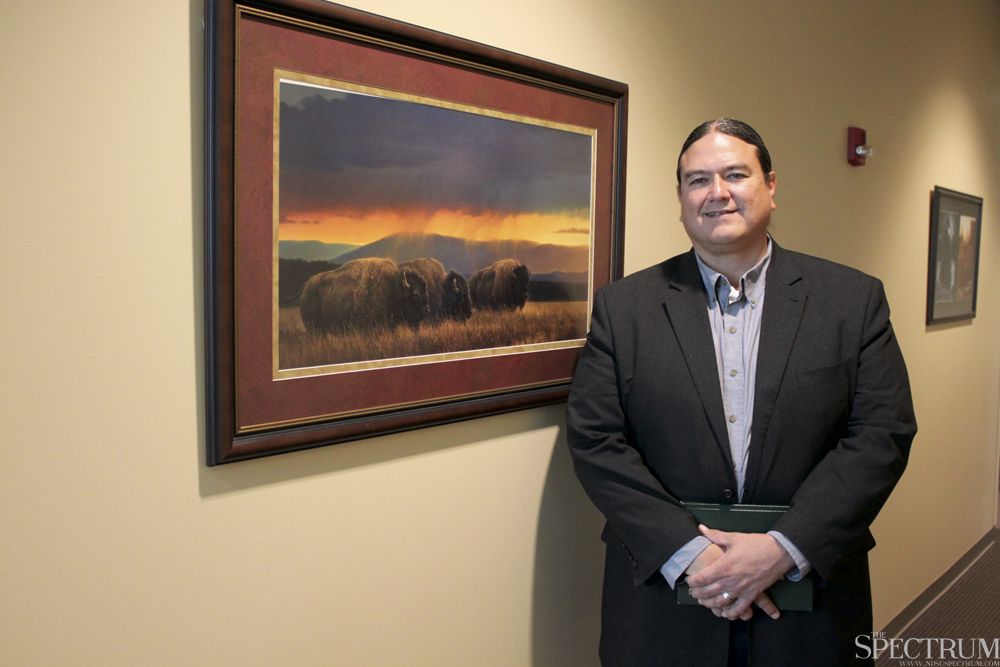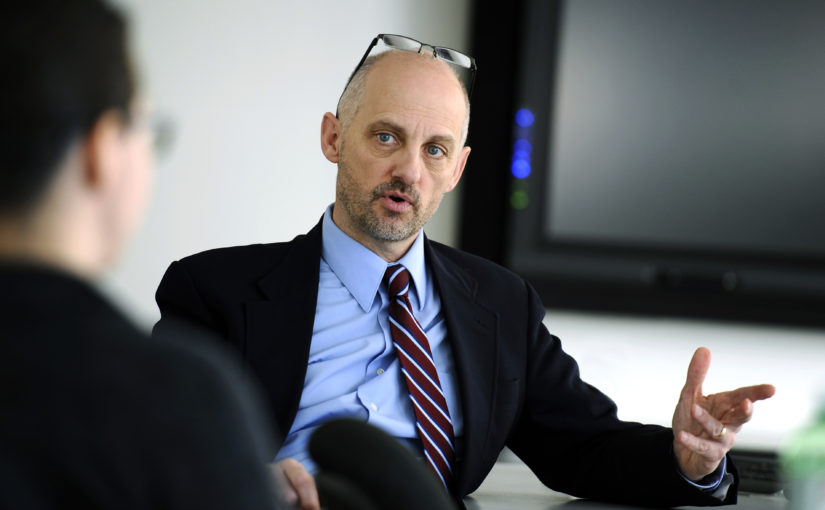
Dr. Paul Carson specializes in immunization. He also works with antimicrobial stewardship.
When fallen ill, popular perception may prescribe venturing to a doctor’s office to receive one-on-one medical care from a medical professional.
The practice of public health approaches medical complications with a different mindset, however.
Public health aims to prevent medical issues before they occur, thus reducing the incidence and prevalence problems.
Immunization
Immunization is perhaps one of the most immediate, recognizable processes of a public health initiative. Through it, formerly lethal diseases such as smallpox, polio and influenza have become dulled down or extinct.
Paul Carson, a physician of almost 25 years, a North Dakota State professor in the department of public health and the current director of the NDSU Center for Immunization Research and Education, specializes in immunization.
Carson’s work formerly focused on cases of the West Nile virus when North Dakota was at the “epicenter” of that disease, being one of the highest incidence states in the country. In 2010, he discovered eight percent of the entire North Dakota population had been infected with WNV.
His current work focuses on immunization acceptance and immunization uptake. Particularly, a research project is underway to find more strategic and effective ways to have physicians communicate with parents who are resistant or hesitant to vaccinating their kids.
At the end of 2016, Carson and his team finished a comprehensive study of immunization practices and policies in North Dakota, thus delivering a white paper and recommendations to the North Dakota Department of Health and the state legislature.
Currently involved on informing healthcare providers across the state about the human papillomavirus vaccine.
The human papillomavirus has one of the lowest acceptance and uptakes across the country, Carson said. “North Dakota is no exception.”
Carson’s team is working with healthcare providers in North Dakota to inform about the HPV vaccine.
At press time, 32 cases of measles have been reported in the Twin Cities area, per the Star Tribune.
Carson said the outbreak has been centered in the Somali community in the area, which has had low vaccination rates for a decade or more.
Part of the reason for low vaccination rates is due to an “unwarranted fear about the (measles) vaccine being associated with autism,” Carson said. “That’s been completely debunked and dispelled, but sadly a number of years ago the person who started that myth, a now very discredited doctor … from the U.K., Andrew Wakefield, visited that community in the Twin Cities and stoked those fears.”
“I suspect the numbers (in measles cases) will continue to rise for a while,” Carson said. “There’s a long incubation period for that and people can transmit it without having symptoms initially, so we haven’t seen the end of that epidemic here.”
For measles, Carson said populations need to be about 95 percent immunized to obtain herd immunity, such that the spread of measles will be stalled.
He said the disease could become a problem for North Dakota as the state has pockets where people have chosen to not vaccinate.
Adverse childhood effects

Dr. Donald Warne’s work in public health focuses on preventing adverse childhood experiences.
Dr. Donald Warne, the chair of the department of public health and an associate professor at NDSU, has an area of focus on the affects of adverse childhood experiences.
“My sense, my hypothesis, is that some of the most vulnerable populations are also populations that see higher rates of adverse childhood experiences,” Warne said. He added in order to address public health issues such as preventing depression and addiction; communities need to address prevention of ACE.
He looks to see the patterns between impoverished communities or communities that suffer from discrimination and communities that do not have these problems.
Warne said what is seen is that individuals who suffer from ACE have worse health outcomes and are linked with higher rates of heart disease, diabetes and cancer.
Antimicrobial stewardship
At the levels of the World Health Organization and the Center for Disease Control, there is a concern for crisis in antibiotic resistance.
“Many, many bacteria now are evolved to where very few, and sometimes in some cases, no antibiotics are effective anymore,” Carson said. He further said there is no “big pipeline of new antibiotics” to render the weakening effects of current antibiotics, and as such his team is creating a push to use current antibiotics judiciously to maintain their effectiveness.
Carson said in any healthcare setting about half of all antibiotics are used inappropriately, in that they are not needed or are too strong when prescribed.
Through education and research, Carson aims to cut down inappropriate use and patients coming into a clinic with an expectation to receive an antibiotic even when one is not needed. His team is also involved with helping doctors know how to act in situations with these patients.
Why public health?
Carson said being a physician with one-on-one care is a very gratifying experience with the ability to get immediate feedback on if care is working or not.
“But it’s a one-on-one thing,” Carson said. “That excites me, knowing that something I did not only affected the one patient I saw that day or the few patients I saw that day, but potentially hundreds to thousands of people.”
Warne, who also has a background in medicine as a family doctor, said, “”My frustration in medicine is that we could make an impact one patient at a time, but the social factors and the other factors that impact a person’s health are not prevented in the hospital or in the clinic, it has to be prevented in the community.” He added if he were going to make a more meaningful impact, he would need to work upstream and change policies.
He added preventing things from happening in the first place is “very gratifying to me.”
“I’m optimistic about what we’ll be able to see happen in public health in North Dakota in part because of what our graduates are going to be able to contribute in the future,” Carson said.
